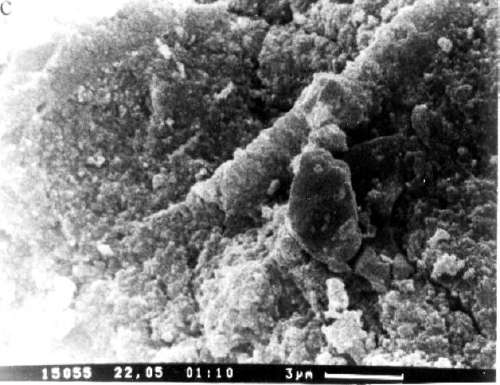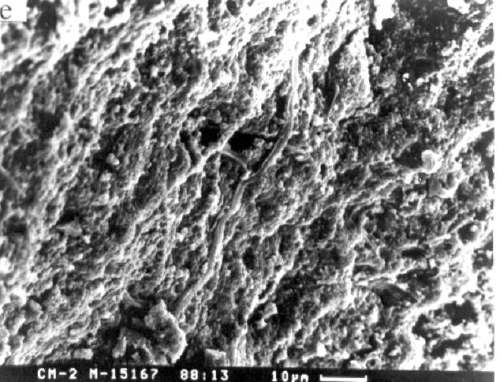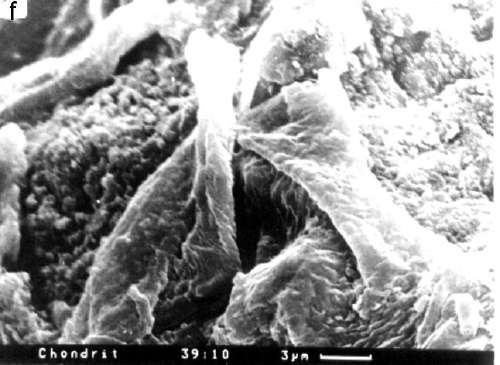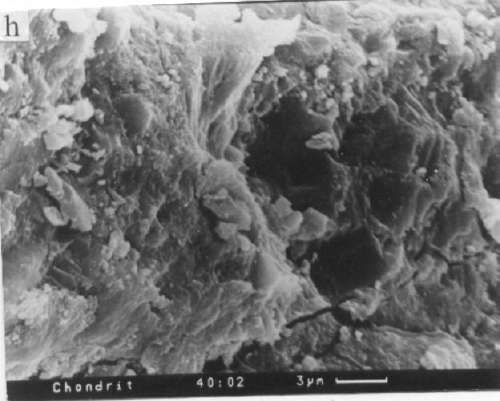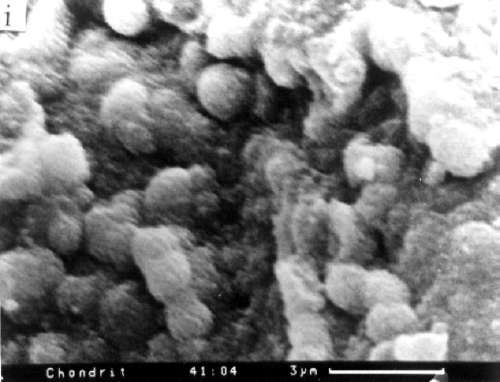Fossilized Bacteria in Murchison and EfremovkaI am sending you some microphotos from Murchison and Efremovka meteorites and the text to them — Stanislav Zhmur, 27 January 2000At a conference in Denver, July 20-22, 1999, a pair scientists from the Russian Academy of Sciences presented sharp images, taken from fragments of several carbonaceous meteorites, that look very much like fossilized microorganisms. The scientists are Stanislav I. Zhmur, Institute of the Lithosphere of Marginal Seas, and Lyudmila M. Gerasimenko, Institute of Biology. The conference was "Instruments, Methods and Missions for Astrobiology II," the third in a series organized by NASA's Richard Hoover. The Conference Proceedings (1) became available from SPIE, the conference sponsor in December, 1999. We contacted Dr. Zhmur and asked permission to publish some of those images on the Cosmic Ancestry website. He agreed. Here are the images with his comments: "Comparative analysis of bacteriomorphic structures from the carbonaceous meteorites, Murchison, Efremovka and Allende,... and morphology of microorganisms of modern and ancient terrestrial cyanobacterial community showed that they are analogous. This gave us reason to consider that these bacteriomorphic structures are fossilized remnants of microorganisms. The lithified remnants ...are tightly conjugated with the mineral matrix, removing the possibility that they are contaminants. The selection of microfossils capable of being interpreted as biological is quite wide. Some of them are demonstrated in the pictures:
"The microfossls detected apparently represent the remains of microbial communities rather than remains of individual microorganisms; the communities were well developed and resembled cyanobacterial communities. The communities functioned in an aquatic enviroment, probably in hydrothermal volcanic activity zones. "The basic morphological similarity of modern and ancient terrestrial microorganisms with the bacteriomorphic strutures found in meteorites supports the belief that the primary biological worlds of the Earth and extraterrestrial objects were united. The identity of matter from which various objects of the solar system (planets, asteroids, meteorites, etc.) consist and their close (on geological scale) age are also evidence in favor of the united biological world of the solar system. "The results of our investigations indicate that microbial life on various objects of the solar sistem was present virtually from the time of their formation, that is, 4.5 billion years ago. This means that life originated almost one billion years earlier than it is usually belived. The delay in the time of the appearance of life on the Earth (3.8 billion years ago) and extraterrestrial objects supports the idea of panspermia, i.e. the idea that life on the Earth was brought from the space. This idea is promoted by such authorities as V.I.Vernadsky, who wrote “...life did not originate on the Earth, it was brought to the Earth from space in a finished form;” and G.A. Zavarzin, who believes that data on the time of the appearance of the most ancient prokaryotes on the Earth conclusively prove the extraterrestrial orign of life."
References1. Stanislav I. Zhmur and Lyudmila M. Gerasimenko. "Biomorphic forms in carbonaceous meteorite Alliende and possible ecological system - producer of organic matter hondrites" [abstract] in Instruments, Methods and Missions for Astrobiology II, Richard B. Hoover, Editor, Proceedings of SPIE Vol. 3755 p. 48-58 (1999). | ||||||||||||
